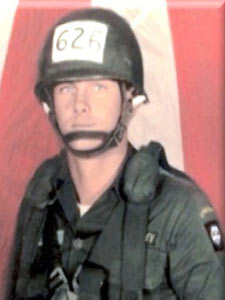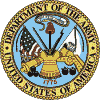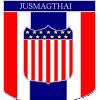| |
|
|
|
Joseph Kerr Bush, Jr
Captain
ARMY ELEMENT, JUSMAGTHAI Army of the United States Temple, Texas January 28, 1944 to February 10, 1969 JOSEPH K BUSH Jr is on the Wall at Panel W32, Line 3 See the full profile or name rubbing for Joseph Bush |

   |

|


| |
|
Joseph Bush Jr. was another son of Temple, Texas, lost in the Vietnam war. He was 25 years old and had a family. He was Regular Army and knew the price that he might have to pay. He paid that price and I honor him for doing his duty and loving his country. I am humbled by his sacrifice and honored that I was in-country with this brave hero.
Walter Weddell |
|
I am a Army ROTC cadet at the University of Texas and I want to express my gratitude and most sincere condolences to Joseph Bush and his family. I am from Temple so I feel a more personal connection and I want to let his family and other veterans and families of those to know that your sacrifice is not unnoticed and it is appreciated. His service and sacrifice brings honor on the Army, his family and his community. Captain Bush's actions are inspiring and heroic. His selfless actions are an example for future generations of soldiers to follow. His actions portray the very thing a leader should be and display the essential qualities a leader must have. Thank you, without men like you we wouldn't be the great country we are today. E-mail address is not available. |
A Note from The Virtual WallInternational accords guaranteeing the neutrality of Laos had been ignored by the North Vietnamese since the day they were signed, and by the mid-60's the North Vietnamese Army (NVA) was estimated to have some 35,000 NVA troops more or less permanently in place within Laos - some were engaged in maintaining the famous Ho Chi Minh supply line through Laos and Cambodia into South Vietnam, while a considerable number were conducting ground operations in the northern parts of Laos. This situation was placing unacceptable pressures on the Royal Laotian government and obviously on the Allied forces in SVN who were the recipients of the men, arms, and munitions which traveled south along the Trail. In 1966 the U.S. government established Project 404 (sometimes referred to as "Palace Dog"), a system whereby military personnel could be "in the black" in that technically they were not in Laos. Individuals in Project 404 were assigned to units outside Laos and their in-country existence was classified for most of the 1964-1973 time period. Being "in the black" allowed service personnel to perform military duties as a civilian operating in Laos under the supervision of the military attaches to the US Ambassador to Laos. A number of separate military efforts were established under Project 404:
In late 1967 the NVA elbowed the Pathet Lao aside and began concerted attacks against the Royal Lao forces and the "black" US personnel and facilities in Laos. By mid-March 1968, the NVA had recaptured Nam Bac, a strategic valley north of Luang Prabang, and successfully assaulted Lima Site 85 at Phou Pha Thi. By the beginning of the monsoon season in 1968 Lima Site 36 (Na Khang) and Lima Site 108 (Moung Soui) were in jeopardy. The monsoon weather slowed the NVA effort until the beginning of 1969. Instead of going to work at JUSMAG Thailand, Captain Bush was an advisor to Laotian forces at Lima Site 108, Moung Soui, near the Plaine des Jarres in north-central Laos. According to Dear America: Letters Home from Vietnam (ed Bernard Edelman, New York Vietnam Veterans Memorial Commission) "Capt. Joseph Kerr Bush, Jr., whose home was in Temple, Texas, was serving as a military attache and adviser to Laotian forces at Moung Soui. He was killed during an attack by NVA commandos on 10 February 1969. For his actions he was posthumously awarded the Silver Star. Capt. Bush was 25 years old." |
| Contact Us | © Copyright 1997-2019 www.VirtualWall.org, Ltd ®(TM) | Last update 08/15/2019. |